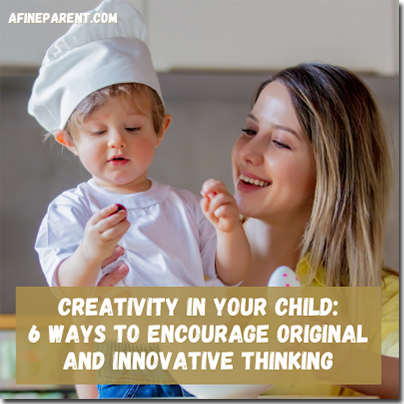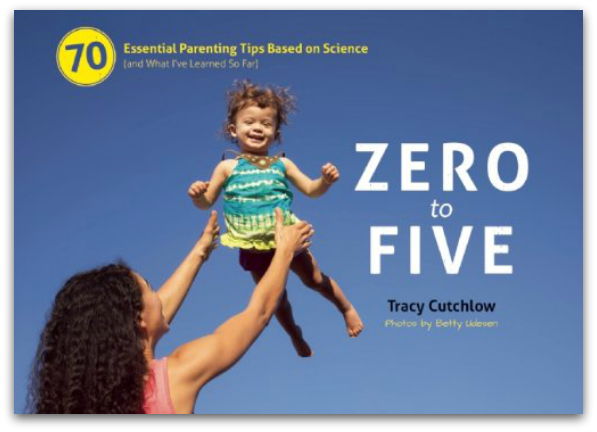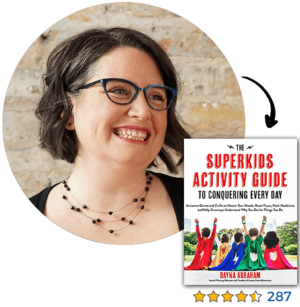 Little kids are naturally creative in ways that we may all wish we still were as adults. The young imagination can create games out of thin air: toys come alive to perform rescue operations of the downtrodden or to live their best life in Malibu.
Little kids are naturally creative in ways that we may all wish we still were as adults. The young imagination can create games out of thin air: toys come alive to perform rescue operations of the downtrodden or to live their best life in Malibu.
When my son and daughter were little, I loved to watch them explore how his action figures could go on adventures with her Barbies. Their toys would be swimming in a pool one minute, then saving the world the next, each adventure building upon the one before.
A whole new world of creative play opened up for them as their toys became not only a door to the pretend world, but also a tool to interact with each other in a way that challenged their imaginations. Watching them create story lines and themes almost felt like having a front-row viewing of the exploding growth of their young brains.
But as my kids got older, I witnessed self-doubt make its inevitable invasion as they began to compare themselves to other kids and formulate ideas about what is “normal.” Free play and unrestricted creativity gave way to self-consciousness and wanting to do things the “right way.”
Here’s the thing about creativity and children: as parents, we have the ability to encourage a free-spirited nature even as our children mature and learn more about the world around them. Creativity is important because it opens the door for so many other skills that will benefit our kids as they get older.
In his article “Creativity in Young Children,” James D. Moran III says:
“creativity is…a special type of problem solving–one that involves problems for which there are no easy answers: that is, problems for which popular or conventional responses do not work. Creativity involves adaptability and flexibility of thought.”
Moran explains that there is a difference between creativity, intelligence, and talent. Research indicates that creativity can be measured separately from intelligence as a component of a child’s development. The Torrance Tests of Creative Thinking measures creativity by quantifying a child’s ability to come up with original and fully formed “imaginary” scenarios.
On the flip side, possessing artistic or musical talent is more of an indicator of technical skill than the creative process. Creativity goes beyond skill level into unique thought processes and expression. A talented child may be able to easily read the music and play the song; a creative child will use the nuances of tone, dynamics, and measure to perform the song in a unique and meaningful way.
 Tracy Cutchlow says in her book “Zero to Five” that our child’s creativity is an important skill: Creative children don’t just go into the arts; they become entrepreneurs, go into trades like construction or woodworking, and work with government agencies and nonprofits to come up with original approaches to societal problems. These household names are all well-known for their creativity:
Tracy Cutchlow says in her book “Zero to Five” that our child’s creativity is an important skill: Creative children don’t just go into the arts; they become entrepreneurs, go into trades like construction or woodworking, and work with government agencies and nonprofits to come up with original approaches to societal problems. These household names are all well-known for their creativity:
- Thomas Edison for his innovative thinking with over 1000 patents for inventions
- Marie Curie for her breakthrough ideas in the sciences
- Isaac Newton for his understanding of science from simple life surroundings (like the apple tree!)
- J.K. Rowling for her creation of the wizarding world of Harry Potter
- Walt Disney for his amazing ability to combine imagination with engineering to build an entertainment empire
- Leonardo Di Vinci for his unique abilities as one of the greatest painters of all time, but also an inventor, sculptor, engineer, mathematician, and anatomist.
What do all of these creative masterminds have in common? A recent study suggests that successful creative minds most often begin with exploration of ideas through experimentation, followed by exploitation, or an intense focus on one specific creative idea.
Creative children also have a better ability to solve their own problems. My kids were all taught to tie their shoes by running the lace “around the tree” as well as the “bunny ears” method; but they each used unique approaches to the task that combined the methods in a whole new way. When a child has the ability to think creatively about a problem, they have more options and approaches available to them when coming up with solutions.
Self-expression is another area that benefits when children are encouraged to be creative. Self-expression is important because it gives children an outlet to express and deal with big emotions in productive and positive ways. Self-expression could also look like:
- Arts and craft expression
- Style expression of clothing choices
- Choosing likes and dislikes in play, how to decorate their room, hairstyles, etc.
- Curiosity of exploring new concepts or locations
- Expressing emotions through verbal language

Worried about how your child’s uniqueness may clash with society’s standards? We partnered with Dayna Abraham, best-selling author and founder of the Calm the Chaos Framework, to explore how we can use fun games and activities to help kids express themselves and turn their uniqueness into “superpowers”.
This packed masterclass is one of the 70+ masterclasses you get when you join the AFineParent Academy today. Click here to learn more.
As children get older and self-doubt sets in, we can use our role as parents to help our children keep their free-spirited approach to the world. Using specific techniques, we can help them to be open to new ideas and approaches to their creative pursuits. Read on for six ways in which we can encourage our children to have original and innovative thinking.
#1: Encourage Perseverance

Mistakes happen; as adults we know this, but our children often have a more difficult time accepting there are benefits that come out of mistakes. When we encourage a positive approach to mistakes, we teach that we can learn from them. When we resist the urge to fix our child’s mistakes, we allow them the space to come up with their own approaches–maybe even approaches that no one has tried before!
The most creative people work a problem or project through many phases and from many approaches before they come up with a solution that works. Some processes, such as the creation of music, art, or storytelling, never really end. There is a reason that Thomas Edison said “I have not failed. I have just found 10,000 ways that won’t work.”
Continuing to try again is an important part of creative thinking. It’s hard for children to solve problems if they feel they only have one shot at it. To encourage perseverance, we can:
- Use questions to encourage a child to think about their own way to approach a problem. There are usually lots of ways to get from point A to point B; be careful to allow them to create their own solutions, even if they are different from your own!
- Help your child find a process for expressing themselves in the moment, then help them to build on that expression to create a whole new approach that integrates previous work.
- Provide a supportive environment for exploration. When your child knows that there are wide boundaries for figuring out a process that solves a problem or leads to a creative breakthrough, they are more willing to consider out-of-the-box ideas.
#2: Include Directed Activities

It may seem counterintuitive to sign your child up for structured activities as a way to encourage creativity; but activities can help open your child’s mind to new passions like dance, art, and reading. By giving your child’s creativity an object or medium (like a particular instrument, painting technique, or genre of fiction) you can help them focus their thoughts and form creative approaches, while still focusing on a process rather than an outcome.
Creative activities extend beyond the arts. Sports may not seem creative, but each one has its own techniques that require creativity and adaptation to use effectively. My daughter cheered throughout school and had to learn unique dances and routines that required her to use creative approaches to get her body to perform the way she wanted it to. My son was a wrestler and each opponent chose different methods of attack with both wrestlers having to think outside the box to outsmart their opponent.
Some other directed activities that can encourage creativity include:
- Foreign language classes and clubs: Learning a new language and culture strengthens vocabulary and provides a different perspective on the world.
- Community service organizations: Helping others by working to provide assistance and solutions to social problems opens up new avenues for using creativity.
- Student government: Leadership roles encourage “thinking on their feet” to develop innovative ways to approach or solve issues.
- STEM activities: STEM activities can be as simple as providing your child with a chemistry set or microscope, access to technology, or building sets.
- Cooking lessons: For children who love working in the kitchen, being in a fully stocked kitchen with the availability of diverse recipes may give them encouragement to add their own twists to the menu and even create their own unique dishes.
#3: Emphasize Learning Over Grades

Regurgitating answers for a test doesn’t necessarily suggest real learning. Grades are really just an account of points from a system that revolves around artificial deadlines and a lot of subjectivity. When an emphasis is put on the process of learning, rather than grades, there becomes space for:
- children to become more self-aware of their progress.
- failure to result in more opportunities to problem-solve, rather than being an endpoint to learning.
- more order and structure to the learning process.
- more creativity within the learning process!
While in middle school, my daughter participated in an activity for which she had to make a poster about her chosen country, offer food from that country, and dress in a way that expressed the culture’s traditional or current styles. The projects were presented at a “Tour of the World” event, where students were able to share unique facts about their chosen countries. The event was an amazing display of each child’s unique creativity that was encouraged when they were allowed to explore beyond the simple facts of each country.
When we emphasize learning over grades, we are laying the groundwork for generalization beyond the walls of school. We give the message that there is more importance in a process than an outcome; promoting the development of perseverance and grit. Some ways in which we can change how we praise and reward our children to better emphasize the importance of effort over outcome include:
- Talk about the steps: Asking questions while the process is happening helps children to think through their approach and make future decisions about learning. When talking about a musical piece, we might ask about what comes next after learning all the notes, encouraging our child to think beyond the basic notes.
- Avoid setting limits on learning: Creativity is unique for each child and our children also likely have methods of learning that are different from that of their parents. We want to be sure that we don’t box our child’s creativity in with limits or rules.
- Avoid judging: Being judged can shut down the creative process quickly. Instead of saying what’s “good” in a drawing, we can point out what’s interesting and ask about what our child was thinking about when they created it.
#4: Provide Tools to Find Answers

When my son was little, he loved bugs. All kinds of insects made their way into our home, destined for a pin board. He wanted to know all about them, so we provided tools like books about insects and a microscope to examine them.
As the various bugs made their way to the pinboard, the descriptions underneath weren’t genus and species, but the name and most interesting trait about each insect (i.e.“wiggly eyes,” or “furry legs”). Even when nurturing STEM skills, creativity has a place.
Tools do not always need to be fancy or costly. Often, normal household items may serve a purpose similar to that of pricer options. Some tools that may encourage your child to tap into their creative side include:
- A library card: access to books gives your child access to areas of thought and approaches they may not even know about yet. Another essential tool: a visit to the library on a regular basis and guidance on how to access fiction and non-fiction materials that can expand their view of the world
- Art supplies: young children can start with basic supplies like clay, moldable sand, washable paints, crayons, colored pencils, and even sidewalk chalk. When your child shows a particular interest in one type of art, up your game with more detailed tools specific to their interests.
- Musical instruments: some schools loan or rent instruments to students who join a band or orchestra. Many music stores will let your child try an instrument before buying it. Sometimes family or friends have an unused instrument that can be borrowed to gauge your child’s interest before committing to a purchase.
- Outdoor equipment: interacting with nature requires kids to think on their feet and come up with innovative solutions when they run into obstacles. Tools like tents, sleeping bags, flashlights, or field guides can help kids learn more about their world and unique ways to interact with it.
- STEM equipment: a basic microscope or chemistry set can open up a whole new avenue of thinking about how the world works. My son loved working with rocketry.
- Cooking supplies: supplies can be child-friendly for younger cooks or can be the “real thing” as they get more experienced. Picture books about cooking, recipe books, and old family recipes are great tools to get kids’ minds moving when it comes to the culinary arts. My daughter has become an excellent baker and loves to add her own touches to her dishes.
- Building materials: whether it’s Duplos or wooden blocks for younger kids, or Lego sets and metal construction sets for older kids, providing materials that can be made into countless projects stimulates innovation in your child. Don’t forget woodworking tools (used safely and with guidance) as an avenue for creativity.
#5: Model Visual Thinking

Kids are generally visual learners, but the skill to visualize within our own minds has to be developed. Using visual aids to help picture solutions to problems or challenges can be an excellent tool for stimulating creative thinking. For a child who loves art, exposing them to the work of great artists, street artists, and performance artists gives them a range of exposure for how creativity starts as a vision.
We can also prompt visual thinking during reading time by asking our children questions in a way that encourages the development of their own ideas—without the influence of an adult’s vision. Instead of deferring to general comprehension questions (“What color is the car?”), we can ask questions that allow for more open-ended responses, such as:
- What’s going on in the picture?
- What do you see that makes you think that?
- What more can we find?
A simple shift in the questions we ask our children can encourage them to come up with their own interpretations of a picture. Restating their answers without judgement allows children to know their ideas are being heard and that there is no “right answer” that they need to come up with. This gives them the freedom to explore the visual element of pictures and stories in unique ways.
As children show a more mature visual thinking ability, we can add and adjust our questions to allow for more creative thinking:
- Why do you think the artist or designer chose the materials used in the piece?
- What process do you think the creator used to put the piece together?
- How is this piece similar or different from other pieces?
- What do you find useful in the piece?
When encouraging visual thinking, we should be careful not to guide our child toward or away from a specific outcome. Instead of dismissing an answer that may not initially seem to make sense, we can continue to ask questions for clarity and understanding, in a judgement-free manner.
#6: Use Diverse Language

Few things serve a child as well as a wide vocabulary. Kids are natural categorizers, so being able to name things gives them a basis for moving on to describe how things look or how people and animals act and feel. Use a variety of new vocabulary, metaphors, and similes to help them learn new ways to express their reactions to the world around them. If children don’t understand a word you use, they’ll usually ask what it means, providing you a new opportunity to help them see the world in a new way.
Reading aloud to children is another great way to help them build their vocabulary. Some of the best children’s books combine interesting illustrations with challenging vocabulary and sounds. Books not only provide direct exposure to learning to read, but also allow for the creative expansion of a perspective of the world.
The Virtual Lab School suggests several ways to help children expand their approach to language, including:
- Read a variety of writing styles with your child: Use midday or bedtime story time to expose your child to many different types of writing. We can include poetry, folk tales, and other genres. Making a variety of books available in a home library gives children access to options they may not find at the school library.
- Have a family “word of the week”: The entire family can be involved in creating a broad language experience. Choose an unusual word for your family to focus on each week. Children can look up the word and write out the definition, and family members can challenge each other to use the word in sentences. Look for opportunities to connect the word to things in daily life.
- Set up a pen pal: Kids For Peace sets up handwritten letter exchanges between children either domestically or internationally. Kids World Citizen helps parents and teachers set up international pen pals such as peace corps volunteers and internationally deployed military personnel. Think beyond the traditional kid-to-kid international letters model and consider options such as writing to a favorite author (my son still has a letter he got back from Mary Pope Osborne from the Magic Tree House series). Children can even exchange messages with a NASA astronaut!
All children have natural creativity. We can help our children continue to grow creatively by working with their strengths, helping them to approach situations in unique ways, and providing them with opportunities to express themselves using tools and practices that encourage broad thinking. So find those creativity caps for you and your child, put them on and have fun!
The 2 Minute Action Plan For Fine Parents
Ready to begin the journey towards more original and innovative thinking? Great! Take a few minutes right now to evaluate your child’s current creative strengths by considering, journaling, or discussing the following:
- What are my child’s creative strengths? Where do they shine the most?
- What is my current involvement in that area of strength? How can I use that strength as a platform for encouraging independent and original thinking?
- In what ways do I currently model visual thinking and emphasize learning over grades? Can I shift my current practices to better provide?
- What tools may my child need to better express themselves?
- What diversity is my child currently exposed to on a normal basis?
The Ongoing Action Plan for Fine Parents
Some children are innately creative, but all children have the ability to express themselves and learn in a creative way. As you move forward, look for ways to unlock your child’s creative abilities through several techniques.
Tools: Start with an environment supportive to creativity. Have a variety of tools, such as art supplies, building toys, and objects for pretend play to open up your child’s mind to new possibilities.
Experience: Expose your child to new experiences. When you take them to an art museum, the ballet, or the science exhibit in your town, ask them questions about the experience that will help them think beyond the concrete.
- Read: Explore different genres of literature and writing, which will provide a natural exposure to diverse language. Model story-telling techniques and encourage your child to expand on their own story-telling.
- Passion: Support your child’s chosen creative outlet, even if it’s not a shared passion. Children who follow a particular passion, whether it is a sport, dance, art or even insect collection, learn to think about the intricacies of their chosen passion and that creativity expands into every area of their life.
What a wonderful article . It is so great. I really love reading it and learn very interested ideas about it myself. I am grateful for your sending it to my email.
thank you very much for your time.